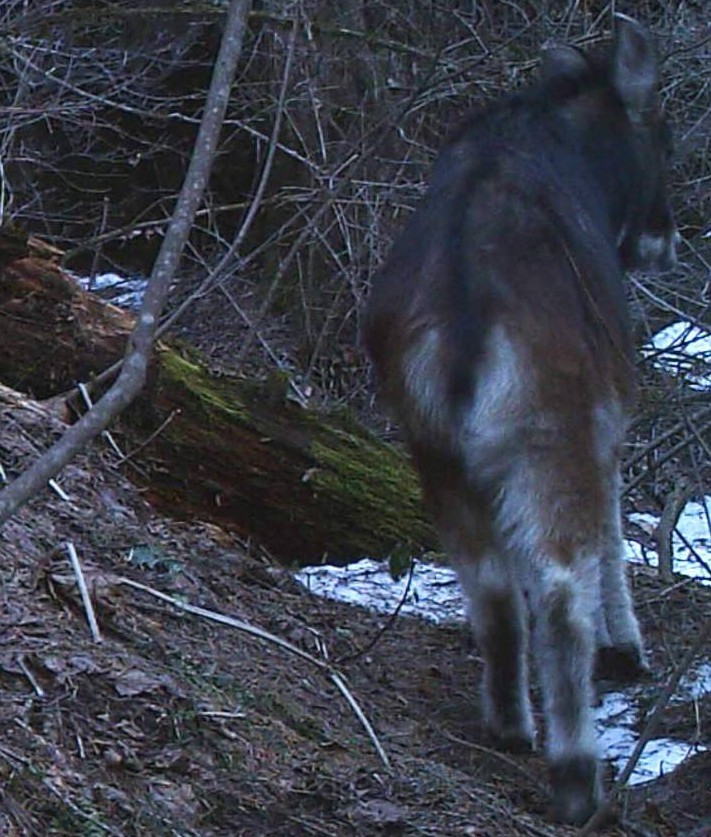
Capricornis thar (Himalayan serow)
| Common name | Himalayan Serow. |
| Latin name | Capricornis thar Hodgson 1831 |
| Local name | Jingal ,Yemu, |
| IUCN/WPA/Indian status | Near threatened/I/Occasional |
| Social unit | Seen solitary or in small groups of less than10 animals, commonly in one and twos SIZE :HBL: 140-170 cm. HAS : 90-100 cm. HL : 16-34 cm.(male), HG: 10-15 cm (female) Weight : 85-140 kg.or in small groups of less than10 animals, commonly in one and twos |
| Size / weight | HBL: 140-170 cm. HAS : 90-100 cm. HL : 16-34 cm.(male), HG: 10-15 cm (female) Weight : 85-140 kg. |
| Description | An appearance of a goat with long, donkey like ears, and a habit of standing with forelegs astraddle, make the Serow an ungainly goat antelope. Its coarse coat(long hair length than the Goral) varies from black to red. In the typical form, both sexes have a coarse dark, sometimes salt and pepper mane and a dark dorsal stripe that is more evident in some individuals than others. The ears are ovate and long like a donkey, with creamy white hairs inside, fringed black. The tail is dark. |
| Behavior | When alarmed , the Serow bounds away with what has been variously described as a hissing snort or a whistling scream. |
| Distribution | The dark form in the southern slopes of Himalayas from Jammu & Kashmir in west to Arunachal Pradesh in the east, the enigmatic red form in the hills of Arunachal Pradesh, Meghalaya, Manipur, Mizoram, Tripura and Nagaland. |
| Habitat | Thickly forested gorges, broadleaved valleys, and subalpine scrub with dense cover snd boulder strewn hills (300-3000 m) |
| Best seen | Himalayan form Kedarnath WLS, Uttarakhand, Red form : Mahadeo WLS , Arunachal Pradesh |



